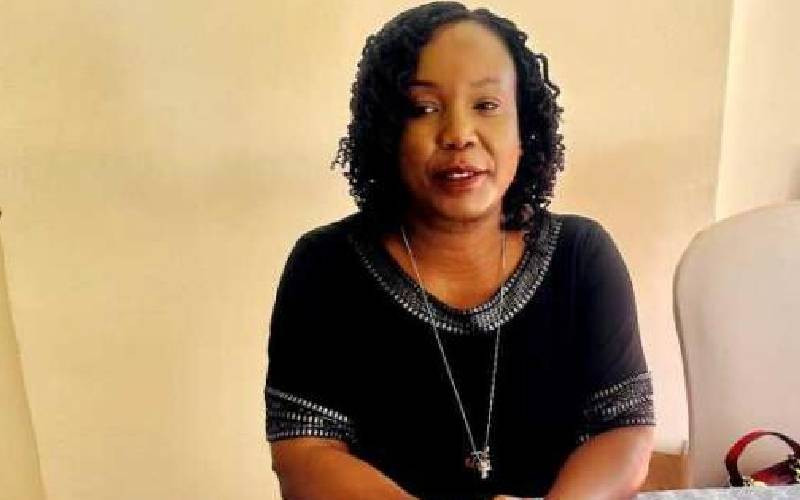 |
|
Image of a woman. (Photo: Courtesy) |
By GATONYE GATHURA
North Eastern, Kenya: There are 138,420 female prostitutes in Kenya, almost half of them HIV positive, according to the first ever national census of sex workers carried out by the Ministry of Health.
Co-ordinated by the National Aids/STI Control Programme (Nascop) and published on Monday, the survey, whose findings will be used to plan for HIV prevention, covered all the former provinces apart from North Eastern, the latter because of insecurity.
Estimates for North Eastern were made using previous studies and computer modeling.
It is estimated that 45 per cent of prostitutes carry the Aids causing virus compared to 7.7 per cent of the general female population.
The study funded by the US government, the World Bank, Bill and Melinda Gates Foundation among others, covered 50 towns in the country with a population of over 5,000 residents.
We estimated that five per cent of women of reproductive age and four per cent of all adult women aged 15 and above in the towns mapped were sex workers,” says the survey published in the journal Plos One.
The census involved researchers from the universities of Nairobi and Manitoba, Canada, the World Bank and the US Centres for Disease Control and Prevention and carried out between 2011 and 2012.
Largest share
“We found Nairobi to hold the largest share of prostitutes at 20 per cent of the total number followed by the Rift Valley (17 per cent), Coast (14 per cent), Nyanza (14 per cent), Eastern (12 per cent), Western (12 per cent), Central (10 per cent) and North Eastern (2 per cent),” says the census report.
Among all the 50 towns, which were mapped Nairobi with 27,620 prostitutes had the highest number with a quarter of these found in Starehe District, which also covers the Central Business District, followed by Embakasi and Kasarani.
At the Coast, Mombasa city had the highest number of sex workers at 9,288, which is more than half of all prostitutes in the region followed by Malindi, Mtwapa and Ukunda in that order.
Kisumu, with 4,041, has the highest concentration in Nyanza, followed by Kisii and Migori.
In the Rift Valley, Nakuru leads with 4,384, followed by Eldoret, Kericho and Kapenguria in that order.
While so far former provincial headquarters have been hosting the highest number of prostitutes in the regions, the pattern is broken in Western Kenya with Vihiga taking the lead with 2,749 sex workers followed, by Busia and Mumias in that order.
Stay informed. Subscribe to our newsletter
In Eastern Province Mavoko town accounted for 19 per cent with 1,973 of all prostitutes in the region, followed by Maua and Meru towns, while Thika with 1,933 in Central Kenya was leading followed by Ruiru and Nyeri.
The researchers also investigated the type of location from where the female prostitutes operated and found a high number in Central worked from the streets followed by Eastern, Coast and Nyanza. Nairobi though with the famous Koinange Street has the least number of prostitutes operating from the streets followed by the Rift Valley and the Coast.
Bars and hotels
Most prostitutes, at 88 per cent, in Nairobi were found to be operating from venues such as bars or hotels. In this Nairobi is followed by Nyanza, Coast Rift Valley, Western, Central and Eastern in that order.
Home-based prostitution was more common in Rift Valley and Western than in the other regions while at the Coast, Eastern and Nyanza sex dens and brothels are common than anywhere else.
Road or truck-stop sex work was most common in Western.
The study mapped out 10,670 sex hot spots around the country with a quarter of them found in Nairobi, 21 per cent in Starehe and 14 per cent each in Embakasi and Kasarani.
While only about five per cent of adult women in all the mapped towns are estimated to be in prostitution in some towns, the figure was as much as three-quarters such as in Emali in Eastern.
“Estimates also varied substantially across the individual towns mapped, with some having more than 20 per cent of women of reproductive age who could be sex workers.”
The trend was mapped as follows: Kisii, 21 per cent, Bondo, 20 per cent, both in Nyanza; Voi, in Coast 22 per cent, Webuye, 20 per cent, in Western; and Maua, 36 per cent, Makindu 36 per cent and Emali 70 per cent, all in Eastern.
“This enumeration of female sex workers provides an important starting point for the planning of HIV prevention programmes, including the prioritisation of cities, towns and locations,” says the study led by Dr Willis Omondi Odek of University of Manitoba, Winnipeg, Canada.
 The Standard Group Plc is a
multi-media organization with investments in media platforms spanning newspaper
print operations, television, radio broadcasting, digital and online services. The
Standard Group is recognized as a leading multi-media house in Kenya with a key
influence in matters of national and international interest.
The Standard Group Plc is a
multi-media organization with investments in media platforms spanning newspaper
print operations, television, radio broadcasting, digital and online services. The
Standard Group is recognized as a leading multi-media house in Kenya with a key
influence in matters of national and international interest.
 The Standard Group Plc is a
multi-media organization with investments in media platforms spanning newspaper
print operations, television, radio broadcasting, digital and online services. The
Standard Group is recognized as a leading multi-media house in Kenya with a key
influence in matters of national and international interest.
The Standard Group Plc is a
multi-media organization with investments in media platforms spanning newspaper
print operations, television, radio broadcasting, digital and online services. The
Standard Group is recognized as a leading multi-media house in Kenya with a key
influence in matters of national and international interest.










